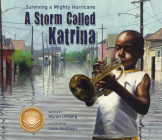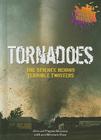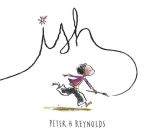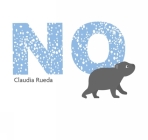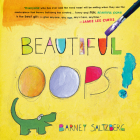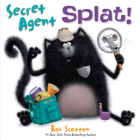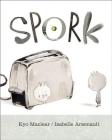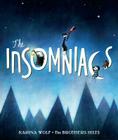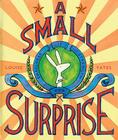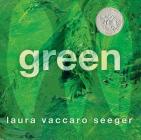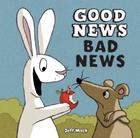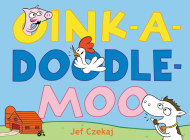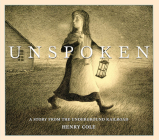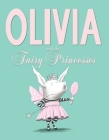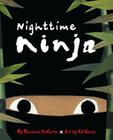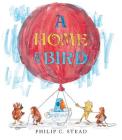Today's Parent Post is by my friend, Martha Rodriguez. Her books, A Reel Cool Summer, Smell My Feet! 10 Seriously Silly and Sweet Short Stories for Squirts, and What about Barnaby? are a delightful stories with fun well-defined characters. When Martha wrote about being a reluctant reader, I knew I had to talk her into letting me use it here. Thanks, Martha!
I was a Reluctant Reader. There, I said it!
I've been hearing and reading quite a bit about reluctant readers lately. I've found that some of the folks talking or writing about the subject weren't reluctant readers themselves, but have children or know others who are. I was a reluctant reader as a child so I thought I would address the topic from my perspective.
Come to think of it, I’m probably still a reluctant reader. When I buy or borrow a book you can be sure that I have researched it thoroughly before taking the plunge. I won’t just pick something up and give it a try because I know that I probably won’t get past the first few pages. This has been true for a long time.
I remember reading the Dick and Jane books as a child, but I’m not sure those books count because they were required reading in my first few years of school. And, yes, I read Dr. Seuss books and some of the other books that were popular, like Caps for Sale and the Curious George books. If my memory serves me correctly, I remember that those books were just “okay.” You’re probably upset with me right now and I’ll probably get some interesting comments for writing that.
I read those books because they were familiar and easy to read, not because I couldn't put them down. I read them because they were always easily available in my elementary school classroom, not because I always had to have a book in hand. I read them because they were the books that the librarians propped up on the shelves, not because it was a read or die situation.
I’m not saying that they weren't and aren't wonderful books. They have stood the test of time and are terrific books loved by all. What I’m saying is that I was not a reader. There were a few rare occasions when I picked up a book, like Anne Frank: The Diary of a Young Girl or Helen Keller’s The Story of My Life, and read it cover to cover in one or two sittings but that was quite rare.
What was wrong with me? Nothing. Who was to blame? Not a single person.
I just preferred to play hopscotch outside with friends, play with Barbie dolls, or watch television. Some of you will recall that we used to do those things back in the dinosaur age… I mean in the 70’s. I’m sure that my parents, teachers and librarians tried everything they could to spark a love of reading in me, but it just wasn't happening. The only time I ever thought about reading was when there was a reading assignment and a subsequent report due. My thoughts were mostly of how horrible the whole ordeal would be. What could I do about it? Nothing, just read the book and do the assignment. I disliked (we weren't allowed to say “hated” in my family) every minute of it.
Does everyone like peas and carrots or jumping out of an airplane? No. So, is it possible that not everyone likes reading? I know, it seems weird that I’m asking that, especially because I just wrote a children’s book!
Well, the truth is that we would all be very happy if everyone liked to read but the reality is that not everyone does. Yes, reading plays a critical role in expanding vocabulary and comprehension, in unleashing imagination and creativity, and in growing curiosity in children. The problem is that it can’t be forced on someone any more than you can force a person to eat their peas and carrots (believe me, my parents tried and somehow I always found a little hiding place for them) or to jump out of an airplane (my husband would like to try to convince me but knows better).
So, what do we do? We keep trying just like my parents, teachers, and librarians did because we want to give our kids the best we can. It takes a bit of patience and some imagination to find the right fit for each child but if you can get that spark, it’s all worth it.
I’m not a teacher or a librarian and I certainly don’t play one on TV, but as a reluctant reader and the mom of a somewhat reluctant reader, let me give you some ideas that I've used successfully.
1. Books you enjoyed as a child: Read to your child the books you enjoyed as a child or young adult. Tell them why you liked the books, where you read them (in a fort you built in your room, for example), how you came upon the books, and who read them with you (mom, dad, grandma, grandpa).
2. Books that interest your child: Always be ready to read books that interest them, even if they don’t necessarily interest you. This one can be tough. Remember it’s not about you; it’s about your child and that spark you want to create.
3. Picture books and books with pictures: When children are very young, picture books are wonderful because, while the child may not yet be able to read, the pictures are fun for little ones to look at. They will probably memorize the story before they can read the words. Once they are able to read the story, they will enjoy the book in a completely different way. In a funny twist, small children may also like books that are not necessarily meant for children but that have colorful pictures. You can relay the information in the text by tailoring it to their comprehension level. Make up stories for the pictures until they are old enough to understand the actual text.
4. Different genre: Read all types of books with your child to find out which ones he or she likes best. If one genre isn't appealing, try something new as long as it is age and reading level appropriate. Historical fiction, current events (even newspapers, magazines and on-line blogs or articles) and biographies may interest him or her.
5. Sports and animals: Children’s sports magazines with interviews of favorite athletes may encourage a child to read more about a particular sport or her favorite team member. Likewise, animal magazines usually feature unusual creatures and their unusual lives. It’s a fun peek into another world and a reason to find more reading material of the cool animals featured.
6. School topics: Find books or fun workbooks about topics your child likes in school like math or science. Even fun workbooks require reading comprehension, writing and focus. When the problems are fun to solve, they will most likely look for harder ones to challenge themselves. Even young children like to peek under secret flaps or follow a winding road to find their favorite characters.
7. Magic or science kits: Magic and science experiment kits are a great way to get your hands on reading and a great way to show what you can do with a magic wand or a test tube.
8. Comic books: Age appropriate comic books are fun. The pictures are detailed and engaging and allow children to escape to different worlds. It’s fun to imagine living in a strange world of superheroes with superpowers. Children may even be encouraged to write their own adventures.
9. Mad Libs: Fill-in-the-blank books like Mad Libs and others are a fun way to be silly and giggly. They won’t even know they’re reading and… added bonus, writing. They can even try to write their own fill-in-the-blank stories.
10 Board games: Play board games with age appropriate trivia questions. If your child doesn't know the answer, it can be fun to explore on-line or at your local library for the answer or to learn more about the topic.
11. Cooking, crafting, exploring: Find cooking or craft activities to do together or go exploring in your back yard with a bug book and magnifying glass or a telescope and astronomy book.
12. Plays and movies: Buy or borrow books of plays and help the kids put on a production for family and friends or make a movie. Sometimes getting into costume can make reading fun.
13. Scavenger Hunts: Pick a theme, like movies, books, or video games, and hide items related to the theme. Then write up some silly (and long-winded) clues or hints to where the items may be hidden and let the hunt begin. Another great way to do a scavenger hunt is to give the kiddos a list of items and ask them to take pictures of the items (a mall, a park, and the beach are great places to do it this way). Then, ask them to write a story about the pictures. You mean they'll be writing, too? Now that's cool!
Don’t stop there. Ask your child’s teacher or librarian for more ideas, be a good example by reading books for pleasure, listen carefully to your child when he tells you why he likes or dislikes certain books, and relax and let him or her take the lead from time to time. You never know… she may write a book some day!
Safety first! Parents should always supervise children when working with science kits, cooking and crafting, or when going on-line.
Until next time… stay cool!
Martha
Martha's Bio:
Martha Rodriguez
Author and Publisher
Martha Rodriguez is the author of the
children’s books A Reel Cool Summer, Smell
My Feet! 10 Seriously Silly and Sweet Short Stories for Squirts, and What about Barnaby? She is also the owner of Read To Me
Publishing, LLC.
Martha was born in Havana, Cuba and immigrated to the
United States with her family at the age of three. She is a wife and the mother to three awesome
kids. Like most moms, she has had many
years of experience answering the question, “We’re bored, what can we
do?" One answer to that question
brought about the story behind A Reel
Cool Summer where her real kids are the characters!
Smell My Feet! is a
collection of short stories, for children ages 7-10, which she original
published on her blog. An angel, a hero,
and a cute dog named Charlie are some of the characters you'll meet. Don't be surprised if you recognize yourself,
a crazy uncle, or a friend in one of them.
What about Barnaby? is Martha's
first middle-grade fiction book about two friends who try to solve the mystery
of Barnaby the dog's disappearance.
Neighborhood friends chip in to help the boys find Mr. Jensen's
mutt. Will a new detective agency be
born?
Martha enjoys visiting elementary schools in person and
through Skype to help kids get excited about reading and writing!
She has been active in her church as well as her
children’s schools, volunteering wherever her talents were in demand. She is a
supporter of literacy initiatives and has been a volunteer Adult Literacy Tutor
with Literacy Volunteers of Leon County (LVLC). She served on the Board of
Directors of LVLC from 2008-2011 as a member, the Vice President, and as Fundraising
Committee Chair.
Martha and her husband, Jose, live in Tallahassee, Florida.
Martha and her husband, Jose, live in Tallahassee, Florida.
Thanks again, Martha - great stuff!
Gail




